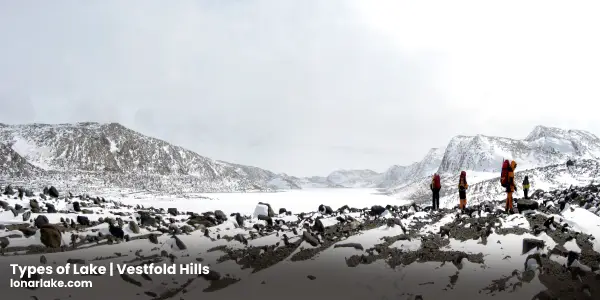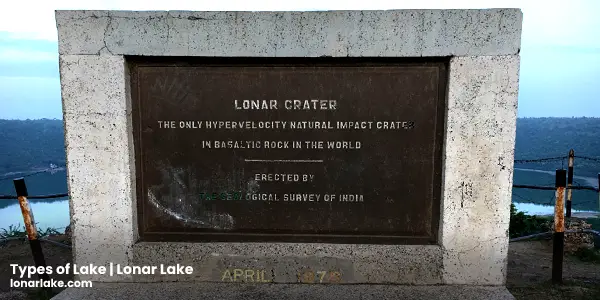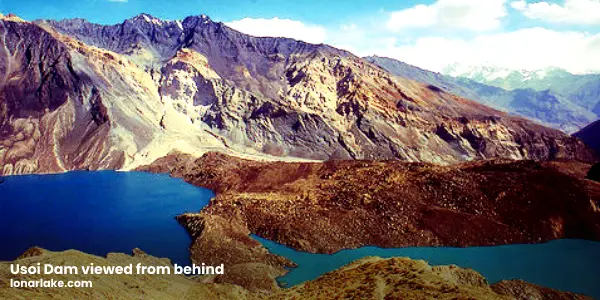Table of Contents
In this blog post, we will learn about the different types of lake, depending on the method of formation or origin of the lake. While understanding the various types of lakes, we’ll compare them with Lonar Lake.
Different Types of Lake
Following is the list of different types of lakes, we will understand them one by one.
- Organic Lakes
- Volcanic lakes
- Glacial lakes
- Meteorite Lakes (Extraterrestrial Impact /Crater)
- Tectonic Lakes
- Fluvial lakes
- Landslide lakes
- Solution Lakes
- Aeolian Lakes
- Shoreline lakes
- Anthropogenic lakes
Organic Lakes

Organic lakes are formed by the different actions of plants and animals. These lakes are small in size and very rare. The best example of an organic lake is a reservoir created by a beaver animal. Also, coral lakes or dams created by vegetation growth can be an example of an organic lake. Vestfold Hills is an organic lake in East Antarctica.
Volcanic lakes
The lake near the source of the volcano is known as a volcanic lake. These lakes are usually formed in volcanic pits or when lava obstructs the flow of a river. Malheur Lake in Oregon is an example of a volcanic lake.
Glacial lakes
Lakes formed from melted glaciers are called glacial lakes. Most lakes in North America and Europe are glacial lakes. The Great Lakes in North America and the Lake District in England are just a few examples of glacial lakes.
Meteorite Lakes (Extraterrestrial Impact /Crater)

When a meteorite or asteroid in space hits Earth, it creates huge pits on the ground. It collects rainfall water and hence such lakes are formed. The best example of this is the saltwater Lonar Lake in Maharashtra.
Tectonic Lakes
Tectonic lakes are formed by the movements of the Earth’s crust. Lake Baikal, the Caspian Sea and the Aral Sea are examples of tectonic lakes.
Fluvial lakes
The river usually does not flow straight, due to the imbalance of land, the river flows crookedly. At such times the flow of the river stops in the middle and a flowing lake is formed there. Oxbow Lake is a great example of a flowing lake.
Landslide lakes
Frequent volcanic eruptions, landslides, or avalanches have caused mounds to accumulate and obstruct rivers in the region, forming landslides. These lakes are often formed by earthquakes and volcanic eruptions. This lake is also called Debris Dam or Barrier Lake. The Usoi Dam in Tajikistan is a prime example of a landslide.

Solution Lakes
Often bedrock dissolves to form cavities with permeable water, at that point, Solution Lake could be formed. Many solution lakes are found off the coast of Florida and Croatia.
Aeolian Lakes
Aeolian lakes are formed by a variety of wind actions. These lakes are formed mainly in arid and hot climates. In this, layers of sand blown by the wind are carried to the valley of the lake, and that’s where such types of lakes form. Lake Moses in Washington, DC, USA is an example of Aeolian Lake.
Shoreline lakes
Such lakes are formed between the mainland on islands or shores on Earth. Coastal lakes are formed mainly due to the siltation of rivers, as well as ocean currents.
Anthropogenic lakes
Anthropogenic lakes are man-made lakes created by direct or indirect effects. The most common example of this is the creation of a reservoir by building a dam on a river. The lake is used for water storage, hydropower generation, or fisheries.
A special feature of Lake Lonar is that it is the only lake in the Basalt Rock formed by a meteorite. Also, the presence of plagioclase in this area confirms the conversion to maskelynite. And according to scientists, the conversion of plagioclase into maskelynite can be caused by a large shock.
What is basalt rock?

Basalt rock is a type of igneous rock. It is formed from hot lava coming out of a volcanic eruption. When lava flows out of the earth due to a volcanic eruption, it cools down over time; this cooled lava then turns into basalt rock.
The word basalt is thought to have originated from the Latin word basaltes. Basalt rocks are mainly hard and homogeneous because they are formed from hot magma and lava in the earth’s crust.
Also, these rocks are heavy in weight and do not contain any fossils. The plateau and Sahyadri mountain ranges of Maharashtra are rich in basalt rock. The Lonar Lake area is also composed of basalt rock. Meteorite in such an area made of basalt rock has created the largest crater in India.
What is the water capacity of Lonar Lake?
The water in Lonar Lake is highly alkaline and saline. It is not usually used for drinking or farming. Therefore, its full water holding capacity is not known. But it often gets dry in summer and increases its capacity after rains in the rainy season.
Citation
There have been a lot of meteors on Earth like this before, but Lonar is the only lake in the basalt rock formed by meteorites. And for this reason, Lonar attracts the attention of scientists and tourists from all over the world. Therefore, this is a matter of great pride for the Buldhana district as well as for the whole of Maharashtra, India.
Follow us on Facebook: Lonar Lake Guide

![Latest News About Lonar Lake [Crater] 9 Latest News About Lonar Lake](https://lonarlake.com/wp-content/uploads/2022/02/Latest-News-About-Lonar-Lake-Featured-Image-510x510.jpg)


